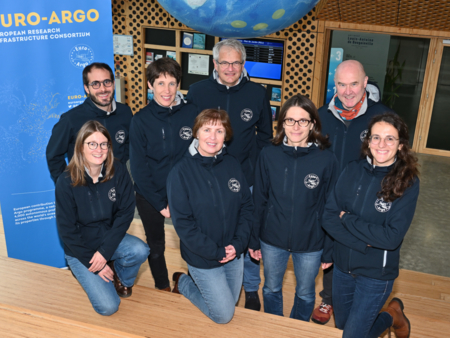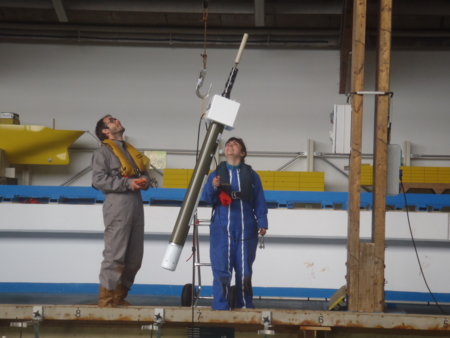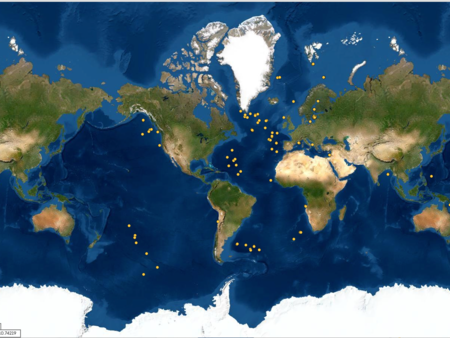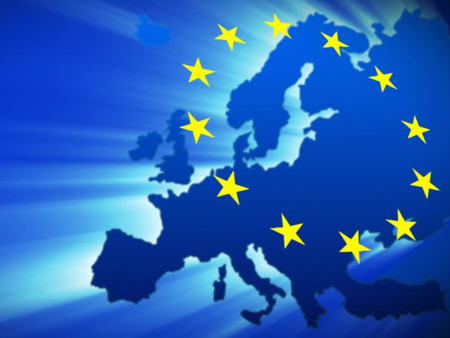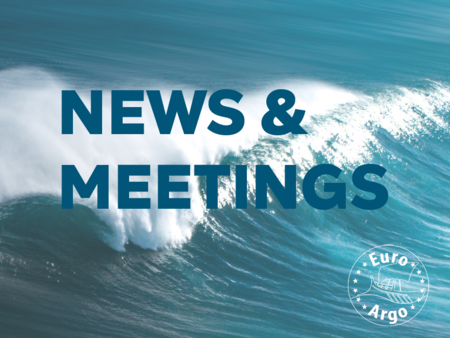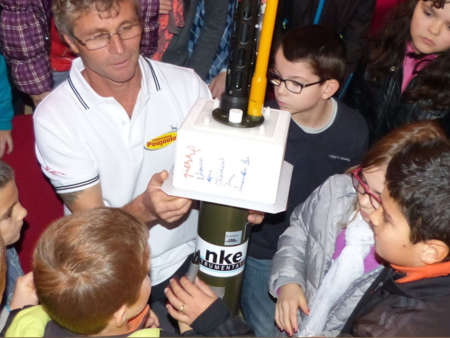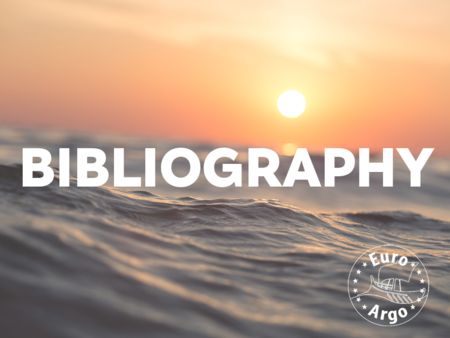One more step for Euro-Argo RISE progress in 2021
Over the last six months, Euro-Argo RISE has developed significant progress along its four main pillars. This news presents the main achievements from January 2021 to June 2021.

Goals | Concrete results |
Diversify providers to secure sensor provision at a competitive cost in order to sustain and expand the network. | - Testing RBR sensor for Core floats:
- Two Arvor floats equipped with RBR CTDs and deployed in the Canary Basin reached 21 cycles end of June.
- Analysis of the RBR floats data is ongoing. Here is an example of the dashboard on Euroargodev: https://euroargodev.github.io/earise-rbr/frenchfloats.
- First deployments of Argo floats equipped with RBR CTDs were carried out in the European Marginal Seas: two Arvor-I were deployed in the Baltic Sea by FMI in May.
- Testing accuracy of sensors for Deep floats:
The first results of the 3-head floats were presented by Ifremer to the international Argo community at the Argo Steering Team (AST). Two floats equipped with sensors still not implemented in the present-day offers (i.e. irradiance) were deployed in the Baltic Sea. Addition of extra-sensors will help to meet the BGC-Argo program requirements and to enlarge the availability of sensors potentially equipping BGC-Argo floats. These deployments in the Baltic Sea are complementary to those in the DArgo2025 German project and should help Europe to develop the extension towards BGC. |
Test Argo closer to the shallow coastal waters to evaluate its potential use in Marginal Seas. | - After first results in the Mediterranean and the Baltic Seas, other preliminary results from targeted Argo missions were received in the Black Sea by IO-BAS and OGS.
- Recovery of the SU float between Sardinia and the Balearic Island during the MOOSE-GE 2021 cruise, as well as the IOPAN float in the Baltic Sea by the German Navy, highlighted the potential of recovery in the Marginal Seas.
- A new Argo-Italy float was deployed on 4th of May to replace the Euro-Argo RISE float in the North Adriatic Sea.
- Configuration tests in the Baltic were conducted by IO PAN using their own floats.
- At the 9th EuroGOOS International Conference:
- the capability of Argo floats to monitor shallow coastal areas of the Mediterranean Sea was presented by HCMR.
- the extension of Argo in shallow coastal areas was highlighted by OGS.
|
Enhance Argo coverage in the high latitude areas | - The float deployed by BSH in the Arctic surfaced: 39 profiles were acquired – by tuning the ice sensing algorithm – after nine months under the ice.
|

Goals | Concrete results |
Develop new regional partnerships and engage with new users. | - The network of scientists engaged in climate and ocean research using Argo data was consolidated via:
- The importance of Argo for environment and society, as well as Argo contribution to the UN Decade, was demonstrated to politicians, decision-makers and high level stakeholders, during a Political Event held online on 8th June 2021.
- The work done within Euro-Argo RISE to the Argo international community was promoted at the Argo Steering Team.
|
Engage with new countries to develop national programmes and ultimately increase the Euro-Argo ERIC membership. | - Following the regional workshops, new countries in the Baltic, Arctic, Mediterranean and Black Seas expressed their interest to initiate cooperation with Euro-Argo.
- SOCIB donated a float to Algeria to expand the network in the Mediterranean Sea.
|
Increase awareness among younger generations of the importance of ocean observations for climate change research. | - The communication for the Ocean Observers initiative was rebranded: a new website and logo were released!
- The Ocean Observers workshop was prepared and a « save the date » and call for abstract were disseminated to ocean scientists, educators, communicators, and citizens.
|
Reinforce the links and partnership with other ERICs and networks | - A side session at the 9th EuroGOOS International Conference was organised by HCMR, MI and Euro-Argo ERIC, gathering eleven Marine Research Infrastructures, highlighting synergies and discussing axis of cooperation to better serve the EuroGOOS community. This event led to the writing of a white paper led by EMSO, in collaboration with the six Marine ERICs, to be submitted soon to Frontiers in Marine Science.
- Euro-Argo ERIC participated to the « OceanGliders Best Practices Workshop » organised with the H2020 EuroSea project.
|

Goals | Concrete results |
Ease access to Argo data and increase their usage. | |
Create awareness about the services/products provided by Euro-Argo and attract new users. | - Argo user communities specific requirements were analysed by MI and gathered in a report: a set of eight main recommendations for Euro-Argo ERIC were discussed and validated at the European level.
- Euro-Argo ERIC and FMI worked hand in hand on the 1st Argo use case to promote Argo data in the Baltic Sea and highlight its complementary contribution to the monitoring.
- Argo and MSFD was presented at the Euro-Argo Mediterranean & Black Sea regional workshop by the PI for Greek MSFD.
|
Enhancement of the services for the operational oceanography | - Memorandum of Understanding with Copernicus Marine Service was prepared by Euro-Argo ERIC.
- Euro-Argo ERIC initiated contacts with Copernicus Climate Service and ECMWF for the Memorandum of Understanding.
|

Goals | Concrete results |
Improve and share DMQC procedures and materials for core Argo | - Euroargodev collaborative framework was continuously enriched with materials, such as the DM report template proposed by BODC: https://github.com/euroargodev/dm-report-template.
- Core-Argo DMQC cookbook version 1.0, was published in March 2021 https://doi.org/10.13155/78994.
- The global CTD reference database for DMQC was improved by removal of duplicated profiles*. Codes are available on GitHub: https://github.com/euroargodev/clean_CTD-RDB_for2021v01release.
|
Improve the BGC data processing workflow at the European level | - Status of the quality control development methods (RT and DM) discussed and defined at the European level for each BGC parameter by SU, PML and GEOMAR.
|
Enhancement of EOVs | - Data management procedures were harmonised with other networks (gliders) through a dedicated workshop.
|
* The duplicate check procedure was performed before the profiles for Deep Argo DMQC were added, and therefore duplicates still exist.
Conclusion:
The beginning of the year 2021 was rich in events for European partners, with three workshops organised and held by the partners. Partners also disseminated results of the project in international conferences, to a wide oceanography community or to the Argo community with the milestone of the Argo Steering Team meeting (AST meeting).
Work is continuing towards the main pillars and next semester will be as rich as the first one!
Deliverables:
During this period, 7 more deliverables were produced and submitted to the EC:
Workpackage | Deliverables |
WP4 | D4.1 Realisation of two "dual sensors" floats prototypes for nitrate and irradiance  D4.1 D4.1 |
WP6 | D6.3 Preliminary results of shallow coastal float operations in the Black Sea  D6.3 D6.3 |
| D6.5 Mediterranean and Black Sea workshop report  D6.5 D6.5 |
| D6.6 Baltic Sea workshop report  D6.6 D6.6 |
WP7 | D7.4 Report on the Argo user communities specific requirements  D7.4 D7.4 |
| D7.10 3D Web based Argo Data Explorer  D7.10 D7.10 |
| D7.11 Argo “use cases” records  D7.11 D7.11 |

